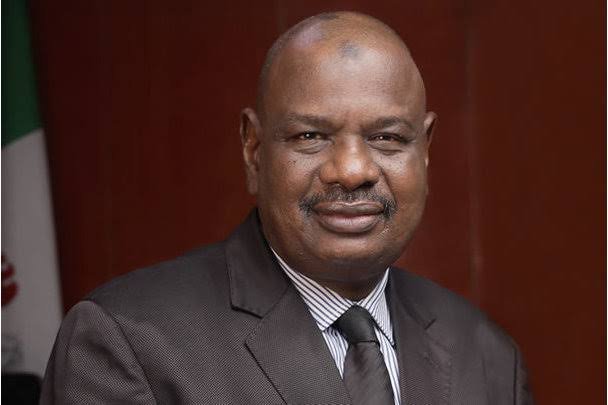TCN to purchase spinning reserve for grid maintenance – MD
By Constance Athekame
The Transmission Company of Nigeria (TCN), says it plans to procure a spinning reserve to maintain the national grid frequency within specified limits.
The Managing Director of TCN, Mr Sule Abdulaziz said this in an interview with the News Agency of Nigeria (NAN) in Abuja on Sunday.
He said that the spinning reserve would maintain the grid even after a system fault or disturbance.
NAN reports that a spinning reserve is the amount of unused capacity in online energy assets which can compensate for power shortages or frequency drops within a given period of time.
Abdulaziz said that the spinning reserve, however, required collaboration with critical stakeholders in the power value chain.
“We are equally working at installing Flexible Alternating Current Transmission System (FACTS) devices at critical nodes on the grid in order to maintain the grid voltage within the specified limits.
“Some nodes on the grid are susceptible to either high or low voltage problems. FACTS devices help to resolve these voltage problems which in turn will help to strengthen the Grid.
”The reliability of the grid is improved when there is redundancy, ” he said.
The managing director said that the company had proposed several projects in order to close the remaining loops on the network which were still radial, creating redundancy.
“These projects include the proposed second Jos-Gombe line, Makurdi- Jalingo and Yola-Maiduguri 330 Kilo Volt (kV) lines which will close the open loop in the Northeast.
“These redundancies will help to further strengthen the grid and help forestall its instability, improving reliability and stability, which will in turn make the grid more robust and less susceptible to faults that can lead to collapse,” he said..
Abdulaziz said that TCN was also implementing a robust maintenance schedule to regularly inspect and repair ageing infrastructure.
He said that the robust maintenance aimed to prevent sudden failure that may lead to grid collapse.
The TCN boss said that the company had continued to carry out regular upgrade of its equipment to prevent technical failure that would reduce downtime; using advanced monitoring and control systems to detect and respond to issues promptly.
“We deployed the Generation Dip/Loss Detection System (GLDS) and the Internet of Things (IoT) which are significant steps in bolstering Grid stability and reliability.
“The GLDS plays a pivotal role in detecting, and responding to sudden drops or dips in power generation across the network.
“This is designed to empower the National Control Centre (NCC) in Osogbo, as it provides Grid controllers in NCC with advanced tools for real-time monitoring and analysis of grid performance, ’’ he said.
The managing director also said that TCN’s engineers had equally deployed an in-house designed Internet of Things (IoT) technology, in response to the challenge of limited visibility of power generators.h
“The IoT devices had been strategically deployed across power stations and some sub-stations to facilitate the collection of near real-time data including power generation levels and grid performance metrics.
“The IoT has enabled the expansion of visibility of power generating stations from 6 to 27, this has helped TCN significantly improve its ability to monitor grid load and identify potential issues before they escalate.
“TCN is equally using the Free Governor Mode of Operation (FGMO), which automatically adjusts generation in response to frequency changes, ensuring stability, reliability, and reduced transmission losses.
“Even though this has its challenges in terms of full compliance by the generating stations, it has also contributed to further strengthen the Grid,‘’ he said.
Abdulaziz said that the company’s research and development department was championing studies for the development of energy storage systems, which could provide backup power during peak demand periods.
He said: “The Federal Government, through the Ministry of Power, is also working hard to ensure incorporation of renewable energy sources such as Solar and Wind which would reduce the strain on the grid.
The move, he said would decentralised energy production through Mini-grids and Off-grid solutions, (NAN)
Edited by Shuaib Sadiq/Ese E. Eniola Williams
Published By
-
Editor/Assistant Chief Correspondent,
FCT Correspondent,
NAN Abuja.
Has also recently published
 EducationJuly 14, 2025COEASU urges Kaduna Govt. to implement CONPCASS, CONTEDISS salary structures
EducationJuly 14, 2025COEASU urges Kaduna Govt. to implement CONPCASS, CONTEDISS salary structures PoliticsJuly 14, 2025Wike advises Gov. Okpebholo of Edo against probing Obaseki
PoliticsJuly 14, 2025Wike advises Gov. Okpebholo of Edo against probing Obaseki ForeignJuly 14, 2025Climate finance: BRICS leaders endorse Tropical Forests Forever Fund
ForeignJuly 14, 2025Climate finance: BRICS leaders endorse Tropical Forests Forever Fund MetroJuly 14, 2025FCT area council workers suspend strike following Wike’s intervention
MetroJuly 14, 2025FCT area council workers suspend strike following Wike’s intervention




